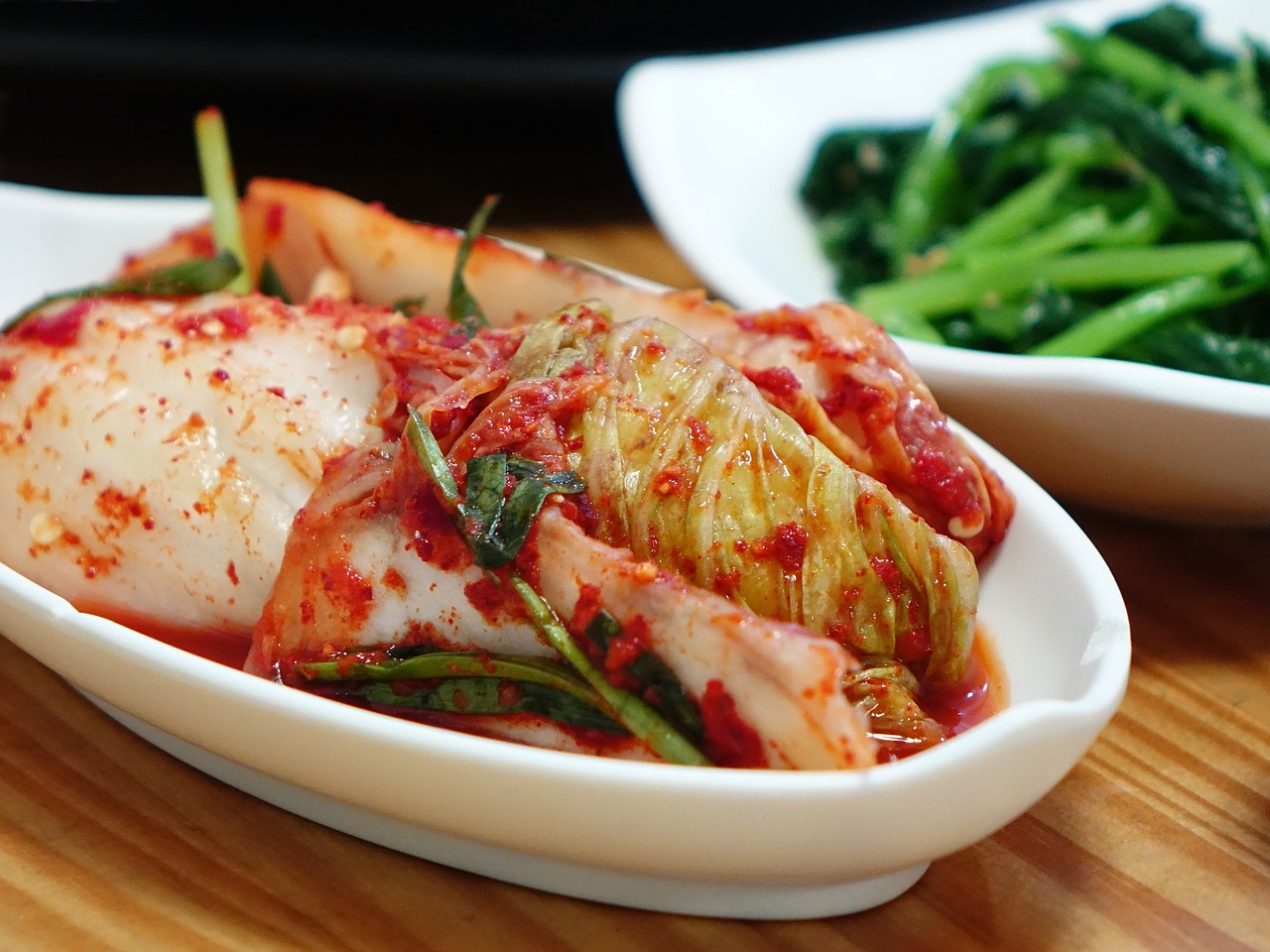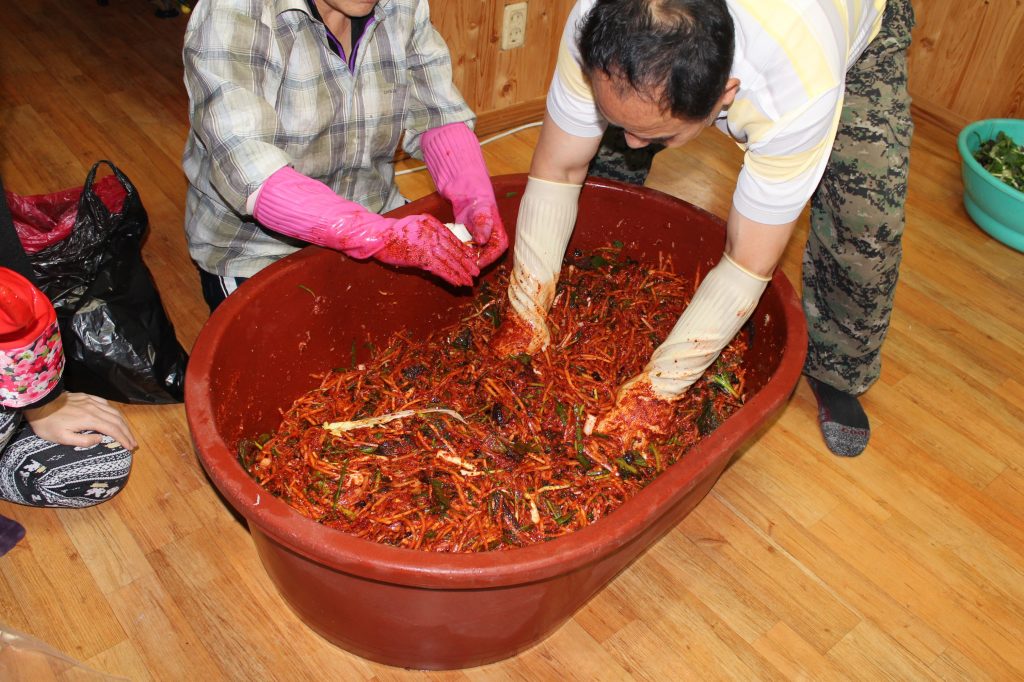Main Ingrediants
Kimchi can be any kind of pickle/fermented vegtable, but usually features cabbage, radish or greens, seasoned with garlic, ginger, fish sauce and chilli paste/powder.
Facts, History and Cultural Significance
Due to the presence of gochu red pepper powder, the putrefactive microorganisms can be controlled and advantageous lactic acid fermentation occurs which allows humans to safely store and consume it.
Historically kimchi has been in one form or another since at least the 1st century BC in Korea, but more standard kimchi that in common today was popularized in the 16th century during the Joseon dynasty.
The kimchi making of the royal court has developed into a Korean seasonal ritual known as kimjang. Family and friends would gather in late autumn to make kimchi in bulk. It was historically then stored in large, black earthenware pots and buried in the garden to keep cool.
Kimchi is a central part of Korean cultural, national and culinary identity.
Kimchi also used a means to maintain a seperate distinct Korean identity from the infleunce of China and Japan over the last 2000 years in their struggle to not be completely absorbed by either.
Savill, Joanna. "Kimchi; HISTORY OF A DISH." Sydney Morning Herald, Aug 14, 2007. https://ezproxy.kpu.ca:2443/login?url=https://search-proquest-com.ezproxy.kpu.ca:2443/docview/364095299?accountid=35875 Kwon, Dae Young, Dai-Ja Jang, Hye Jeong Yang, and Kyung Rhan Chung. "History of Korean Gochu, Gochujang, and Kimchi." Journal of Ethnic Foods 1, no. 1 (2014): 3-7. https://pxhere.com/en/photo/763005 cho, grace m. 2012. "Kimchi Blues." Gastronomica: The Journal of Food and Culture 12 (2): 53-58.



Another great example of food and national identity!